Grand Touring All-Season tires are a popular choice for drivers who demand a blend of comfort, longevity, and performance throughout the year, irrespective of weather conditions.
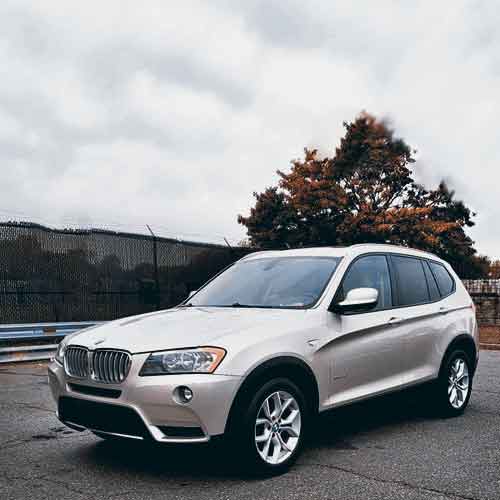
These tires typically feature advanced tread compounds and detailed siping patterns.
Both of these enhance their ability to grip the road in both dry and wet conditions.
In this carefully curated list, each tire has been handpicked for its standout performance in one particular area.
So each of these are setting it apart from the competition.
So by focusing on these specialized performance areas, you can select a tire that aligns perfectly with your driving needs and preferences.
Let’s begin!
Table of Contents
Key Takeaway
| Top Ranking Grand-Touring Tires |
Their Excelling Point |
|---|---|
| Falken EuroAll Season AS210 | Best Budget Pick with great value and longevity |
| Goodyear Vector 4Seasons | Best in Dry Handling due to exceptional lateral grip |
| Michelin CrossClimate 2 | Superior in Braking Performance, especially in wet conditions |
| Vredestein Quatrac Pro | Top choice for Wet Performance, with efficient water dispersion |
| Nokian SeasonProof | Leading in Winter Performance with reliable traction on snow and ice |
| Pirelli Cinturato All Season SF2 | Quietest Ride, thanks to noise-reducing design |
| Dunlop Sport All Season | Most Fuel-Efficient, with lower rolling resistance |
| Kleber Quadraxer 3 | Best for Impact Comfort, utilizing a softer rubber compound |
| Bridgestone Turanza QuietTrack | Notable for Longest Tread Life |
Goodyear Vector 4Seasons
Best overall, but ranked here for its leading dry handling.
So what makes this Goodyear tire the best when it comes to overall dry handling. Well, to know this, you have to understand that handling is predominately a combination of tire’s lateral grip with its steering responsiveness.
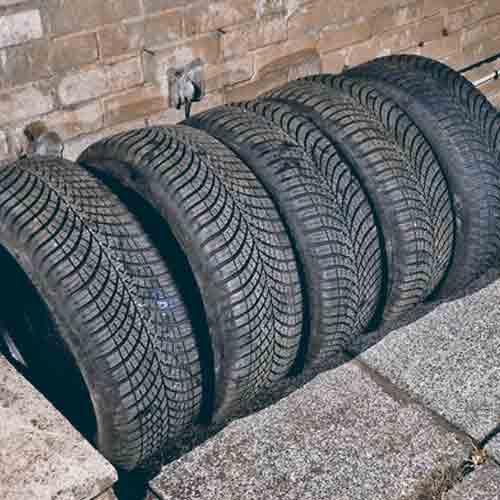
And having said that, here are the key factors that set this tire apart in this area:
- Exceptional Lateral Grip: The tire demonstrates superior lateral grip compared to its direct competitors. This grip is crucial for maintaining stability and control during high-speed cornering and sudden maneuvers, ensuring a safe and responsive driving experience in dry conditions.
- Strong Steering Response: The Vector 4Seasons is designed to provide a very quick steering response, where even small steering inputs result in immediate and sporty reactions from the tire.
- Lighter Weight with Firmer Construction: The tire’s lighter weight, owing to its firmer internal construction, enhances its performance, this is because it causes less momentum inertia, as the tire rolls.
- Rounded Contact Patch: The design of the contact patch is also linked with weight, where the rounded shape allows for a more efficient weight distribution, and more streamlined transition from the tire’s center towards the shoulders (as the tire corners).
So overall, you get exceptional lateral grip and a reactive steering response, allowing Goodyear Vector to outperform all others in the list of grand touring tires.
Detailed Review of this tire: https://tiredriver.com/goodyear-vector-4seasons-gen-3-review/
A side note: Before diving in further, I think its best you check this video out. I am working with these guys.
Falken EuroAll Season AS210
It’s the Best Budget Pick, Overall.
When evaluating a budget-friendly tire option, three key factors come into play. Firstly, the initial price tag is crucial. Secondly, we consider its fuel efficiency and tread life, which together provide a comprehensive view of the tire’s cost-effectiveness over its lifespan.
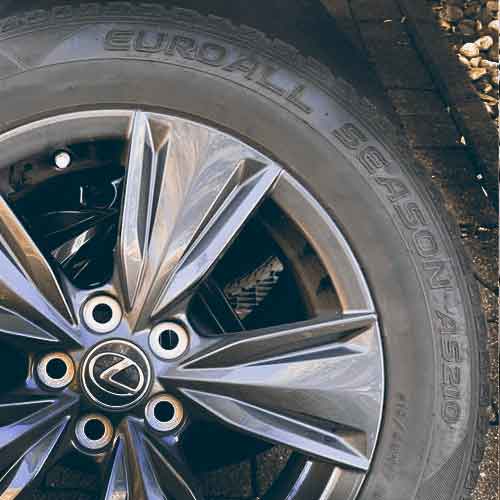
And the third critical aspect is overall performance.
Taking these factors into account, the Falken EuroAll Season AS210 emerges as an excellent choice, providing great value for your money.
This tire stands out not only for its affordability but also for its longevity, where it routinely exceeds the 50,000-mile mark, (which I think is a notable achievement for a premium all-season tires that come with a 3PMSF (Three-Peak Mountain Snowflake) rating).
The tire employs a rubber blend particularly tailored for resistance to wear. While this slightly less flexible rubber may marginally reduce performance in winter conditions, it’s a strategic trade-off that enhances its value through extended wear.
And yes, it’s also keeps the rolling resistance low, enhancing fuel economy.
Additionally, the tire excels in handling, especially on wet surfaces. But yes, the primary limitation, however, lies in its winter performance, which could be improved.
Though I don’t think there’s a better budget pick out there.
Detailed Review of this tire: https://tiredriver.com/falken-euroall-season-as210-review/
Michelin CrossClimate 2
Offers Best Braking Performance.
Dry braking is an essential aspect of the tire’s performance, as it significantly influence the overall driving dynamics.
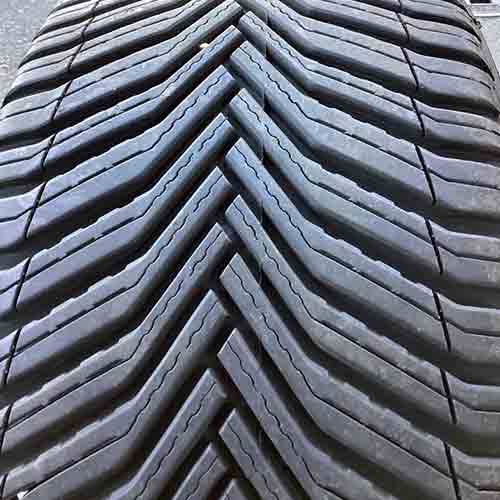
I mean, although it primarily measures the tire’s directional grip, it’s also closely related to steering and handling capabilities.
This can be understood by recalling the 3 phases of cornering: entry, mid-cornering, and exiting.
In the entry phase, as the vehicle initiates a turn, effective braking and sometimes gear downshifting are key. And a tire that performs well in this phase can slow down the vehicle more efficiently, contributing to faster lap times during tests.
During the exiting phase, as the car starts to straighten and accelerate, the tire’s ability to quickly stabilize has again a direct impact on handling time, where it determines how quickly the vehicle can regain speed and control.
Having said that, the Michelin Crossclimate 2 although lacks the lateral grip, it’s superb braking performance still puts it above average in overall handling.
This superior braking is basically coming from the tire’s rounded contact patch, and densely packed central lugs, with an interlocking design. Both of these features enhance rubber-to-road contact, enhancing grip during tire’s linear motion.
Detailed Review of this tire: https://tiredriver.com/michelin-crossclimate-2-review/
Vredestein Quatrac Pro
Offers Best Wet Performance.
Wet performance in tires hinges on their ability to efficiently disperse water, ensuring direct contact between the rubber and the road.
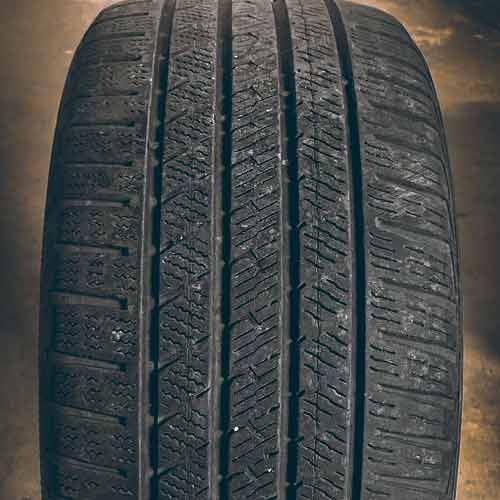
Now here, the predecessor of Vredestein Quatrac Pro already impressed with its exceptional wet grip, and with a 10% improvement in wet traction on a newer model, things are now on a next level.
What sets the Quatrac Pro apart is its intricately engineered grooves, combined with full-depth interlocking and linear sipes that vary in angles across the tread.
The grooves effectively channel away most of the water, reducing hydroplaning and allowing for higher float speeds, with less reliance on the sipes. Yet, these sipes are remarkably efficient on their own, complemented by thick lateral slits and in-groove notches working at multiple angles for superior wet handling.
However, there is a slight area for improvement in aquaplaning resistance, where the tire’s lateral water evacuation could be enhanced.
Its four circumferential channels excel at expelling water longitudinally, but can’t throw out water effectively in sideways direction, negatively impacting its (curved) float speeds.
Detailed Review of this tire: https://tiredriver.com/vredestein-quatrac-pro-review/
Nokian SeasonProof
Offers Best Winter Performance.
When assessing winter performance, it’s crucial to consider factors such as the tire’s road grip, steering responsiveness, and effectiveness in snowy or icy conditions.
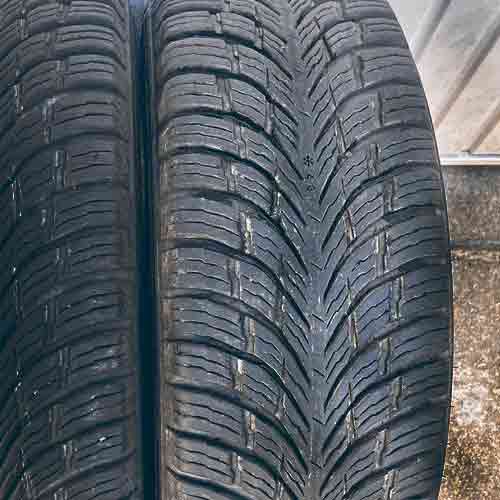
In this regard, the Nokian SeasonProof stands out as a top performer based on my testing and subjective analysis.
But why?
Well, this has to do with its well engineered design and structure.
The tire features numerous sipes and ribs equipped with snow vices, ensuring dependable traction on both icy and snowy surfaces.
These sipes, or small notches, maintain flexibility even in freezing temperatures, thanks to their multi-angle orientations and the temperature-activated functional polymers in the tire’s tread.
This design enhances the overall grip.
On softer, snow-covered surfaces, the tire’s directional tread pattern effectively throws back snow, creating excellent forward momentum or “snow acceleration.”
And the aggressive snow vices you see on the tire help here, though they also make an effective snow to snow contact possible (which generates far greater friction, compared to rubber to snow contact, since snowflakes like to stick with each other).
Detailed Review of this tire: https://tiredriver.com/detailed-review-of-nokian-seasonproof/
Pirelli Cinturato All Season SF2
Offers the Quietest Ride.
The Pirelli Cinturato All Season stands out for its remarkable reduction of road noise, a feat achieved through its superb and well engineered design.
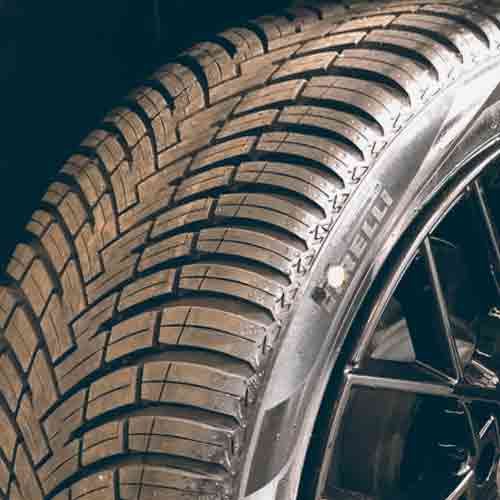
But what makes this tire so quiet?
Understanding this requires knowing that road noise is largely influenced by air interaction. Here’s the breakdown: as the tire spins, air particles, particularly those entering the tire from the shoulder area, clash with the tread walls, creating noise.
And here, the Pirelli Cinturato All Season, despite having prominent lateral voids (between shoulder lugs), still effectively diminish down the impact noise, thanks to its specialized rubber composition and a variable pitch tread design.
I mean, the tire’s rubber includes certain polymers known for their superior noise absorption qualities, rather than reflecting or echoing noise waves (as other tires do). This significantly reduces in-groove resonance.
Moreover, the tire’s pitch sequencing creates a variety of tones or frequencies when air hits the tread walls. These tones are designed to interfere with and neutralize each other.
Detailed Review of this tire: https://tiredriver.com/pirelli-cinturato-all-season-sf2-review/
Dunlop Sport All Season
Is The Most Fuel-Efficient Option.
Now, the overall fuel efficiency gets predominantly affected by rolling resistance. And this resistance is influenced by various factors, including the tire’s weight, composition, and tread design.
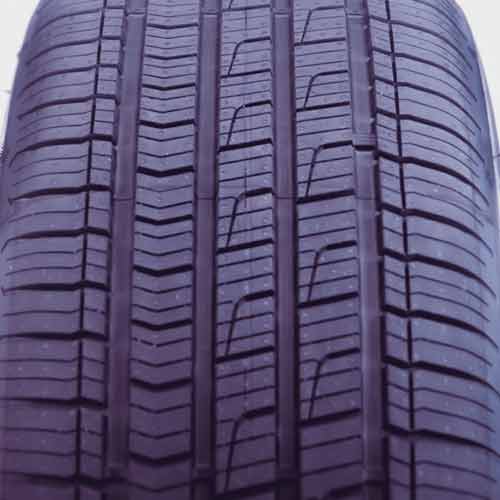
Now, what sets the Dunlop Sport All Season apart as a leading choice in grand touring tires is its optimized design here.
The tire’s primary advantage lies in its lighter weight and the even distribution of this weight across the contact patch.
This design ensures that each lug experiences less pressure as it interacts with the road, thereby reducing rolling resistance and boosting fuel economy.
The composition of the tire also plays a vital role.
Its harder rubber compound, in conjunction with the lighter weight, prevents excessive bending of the lugs.
And this rigidity translates to reduced momentum inertia, meaning the tire requires less energy for starting and stopping its rotation.
Detailed Review of this tire: https://tiredriver.com/dunlop-sport-all-season-review/
Kleber Quadraxer 3
Offers Best Impact Comfort Performance.
The ride comfort of a tire is closely tied to its ability to absorb road irregularities.
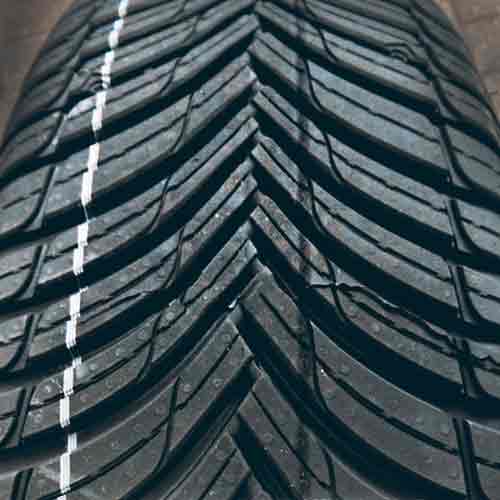
This characteristic largely depends on the tire’s material and structural design.
In simpler terms, tires made with a softer compound are generally recognized for providing a more comfortable ride.
Among the numerous tires I have reviewed, which I believe to be an exhaustive list, the Kleber Quadraxer 3 emerges as the top contender.
This tire excels due to its construction using softer tread rubber enriched with higher silica content, providing superb impact dissipation.
Moreover, you also get a flexible inner cap ply, further adding to the overall road smoothness.
Detailed Review of this tire: https://tiredriver.com/kleber-quadraxer-3-review/
Bridgestone Turanza QuietTrack
Lasts the Longest.
The Bridgestone Turanza QuietTrack stands out in the all-season tire category, particularly for its remarkable tread longevity.
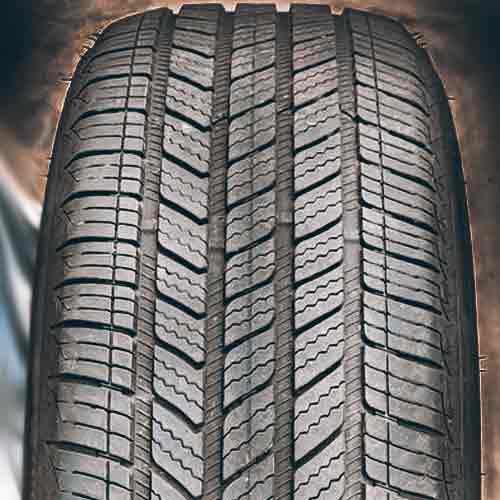
And this durability is achieved through robust construction and advanced design elements, including stiffer rubber that resists wear while maintaining good grip under various conditions.
That’s why you get a tire here with an impressive treadwear rating of 800 and a warranty covering 80,000 miles.
But how does it achieve such longevity, especially considering its tread depths are 10/32″ (and in some sizes, even 9/32″)?
A key factor is its relatively lightweight construction compared to its competitors.
The Turanza QuietTrack features a single ply polyester carcass and a single nylon cap ply, contributing to its lighter weight (this type of construction is mostly seen on standard touring tires).
This lighter construction results in reduced pressure on the tire lugs as they interact with the road, thereby extending the tire’s tread longevity.
Detailed Review of this tire: https://tiredriver.com/bridgestone-turanza-quiettrack-review/
To Wrap Things Up
In this review of grand touring all-season tires, each model excels in areas like handling, winter performance, quietness, and fuel efficiency.
This guide is designed to help drivers choose the right tire for their needs, whether for daily drives or varied weather conditions.As the tire market evolves, this list will be updated with new findings and models.
Your feedback is important to keep this guide relevant and helpful. Please share your thoughts in the comments and support this work by sharing it on social media.
Your engagement and support are highly appreciated in enhancing and continuing this analysis. Thank you!
Why the Quatrac Pro and not the seemingly more advanced Quatrac?
Quatrac Pro is actually the updated version.
Just got the new Quatrac Pro (plus) after the Brdidgestone AWC005 evo. I’ll update with my experience 🙂 But after a few hundred kilometres, I can say they are quieter and slightly more (fuel)economical. Biggest plus is the absence of vibration in the car. Driving a Mazda CX30 (SkyG AWD).
Thanks for sharing, Mathijs! It’s great to hear the Quatrac Pro (plus) is performing well. Looking forward to your detailed update!